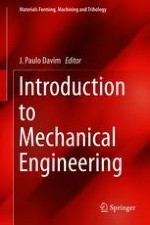Abstract
This chapter describes the production and use of biofuels/alternate fuels to run the internal combustion engine (IC Engine). Two methods, using biodiesel blends with diesel and using syngas obtained from gasification system, for running the IC engine in dual fuel mode have been analyzed. Describing the first method, the objectives enumerate to select the vegetable oil plants for biodiesel production. To accomplish this, the energy input and output analysis of biodiesel plants for 20-year plantation have been done. The biodiesel plants, namely jatropha, mahua, neem, palm, coconut, karanja, jojoba, and tung, have been identified for this purpose. This analysis includes energy input during oil extraction, cultivation, and biodiesel production. The energy inputs are based on manpower, fossil fuel, electricity, fertilizers, plants protection, and water for irrigation, expeller used for oil extraction, agricultural machinery, methanol, catalyst (H2SO4 and NaOH/KOH) and a transesterification unit for biodiesel production. Net energy gain (NEG) and net energy ratio (NER) are calculated for different biodiesel plants for 20-year plantation. Palm and coconut consumed highest energy (117,122.32 and 122,832.84 MJ/ha) during cultivation. Maximum energy output is obtained for palm (123,206.4 MJ/ha) and minimum for tung after its maturity. Maximum net energy ratio is found for mahua (1.7164) and minimum for coconut (1.3034) oil plants. The highest net energy gain for palm (41,689.14 MJ/a) and lowest for jojoba (8494.92 MJ/ha) were found after maturity of plants. There are significant increments in energy output, net energy ratio, and net energy gain with the addition of coproduct (glycerin). This analysis with methanol (used for biodiesel production) recovery has also been done and found reduction in energy input during biodiesel production and also the improvement in net energy gain and net energy ratio. In the second method, the virgin biomass obtained from wood and cow dung is used to generate producer gas as the feedstock for gasifier and in turn the syngas. The producer gas combination and gasifier-engine system are operated in dual fuel mode operation and diesel, respectively. The emission characteristics and performance of the CI engine are analyzed by running the engine in dual fuel mode operation and liquid fuel mode operation with respect to maximum diesel savings at different load conditions in the dual fuel mode operation. It is found that in the dual fuel mode of operation, the specific energy consumption is found to be the higher side at various load conditions. As comparison to dual fuel mode operation, the brake thermal efficiency using diesel is higher. In the dual fuel, the NOx emission was found to be very low which is highly advantageous over diesel fuel alone, but HC and CO emissions are found to be higher than the diesel.
